Interview: Directors of Mune: Guardian of the Moon on Allowing Heroes to Make Mistakes and Women Taking Charge
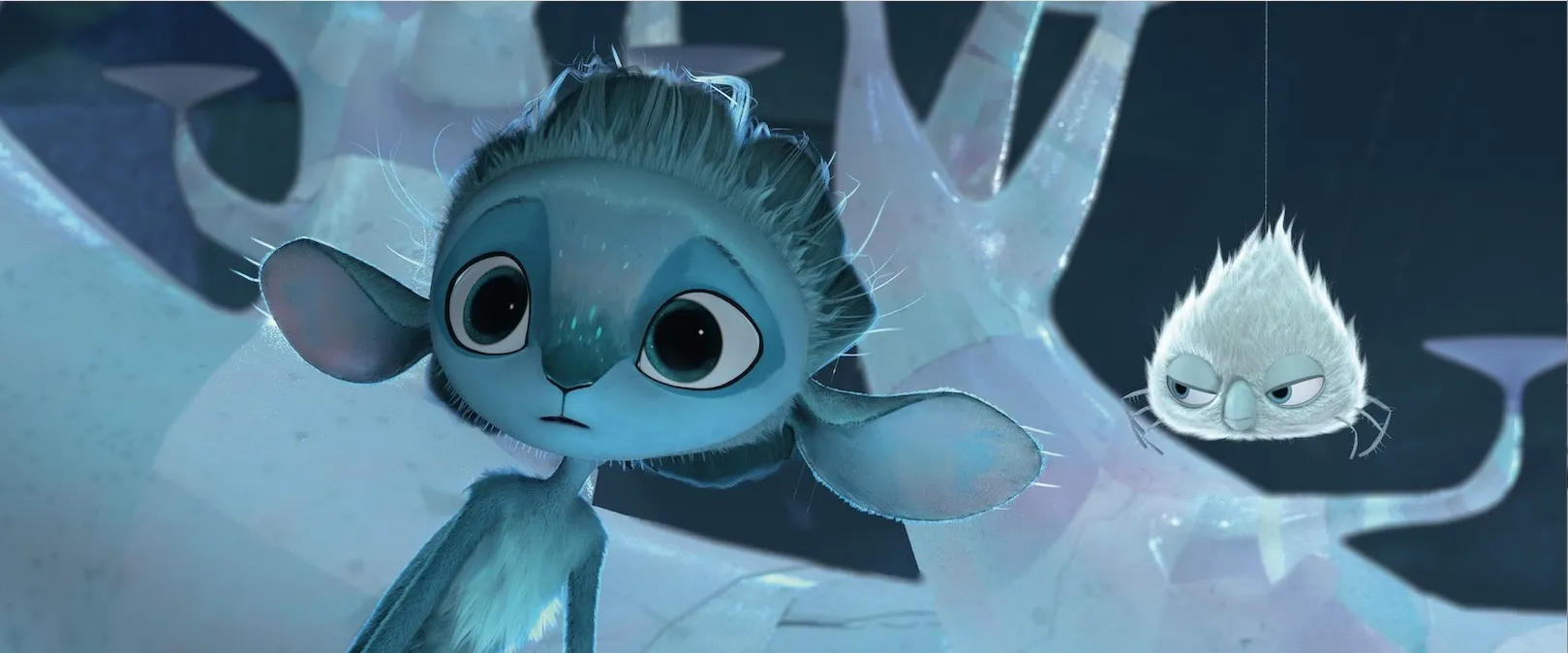
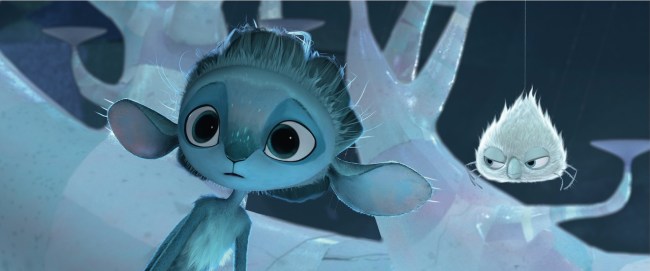
Directors Alexandre Heboyan and Benoît Philippon have created a fantasy world that’s constantly mesmerizing in its mythology and original characters. While Mune was first released in 2014, non-French viewers will get a chance to watch the film in the United States this year thanks to GKIDS–and it definitely deserves a watch.
Mune: Guardian of the Moon takes place in a world where the Sun and Moon are watched over by two guardians. The forest faun Mune is, to the surprise of everyone around him, chosen as the new Guardian of the Moon. At this crucial moment of transition, the ruler of the underworld decides to steal the sun from Sohone, the confident new Guardian of the Sun. While frightened and unprepared for the role, Mune, Sohone, and a young girl made of wax named Glim go on a quest to save the sun.
I spoke to Heboyan and Philippon over email about creating this spellbinding world and the movie’s emphasis on forgiveness, as they made sure our heroes were allowed to learn from their mistakes.
TMS (Charline): I really enjoyed the parts of the film that felt very mythological, and I was constantly in awe of the visuals! Where did the inspiration for the story and characters come from?
Philippon: We wanted to create a new mythology, like in Star Wars or Dark Crystal that had a powerful impact for us when we were kids. I had this idea of a creature from the forest who would unhook the moon and could carry it like a balloon. I find the moon very inspiring. Starting from there, I thought that the moon being small could be vulnerable and would need a guardian to watch over it. So would the sun. So it would mean that the evil enemy would want to steal the sun.
From there, the world had to be very ecological and be a parallel to our big questions: what would happen if nature died? In our world it’s because of climate change, in Mune it’s because the sun has disappeared.
It takes the structure of a “coming of age” story of this young and candid faun from the forest who gets in charge of watching over the moon, and a buddy movie with Sohone, the guardian of the sun, who is an arrogant bully (very sunny like), and Glim, who is the girl made out of wax, who seems fragile but ends up being full of courage and an essential ally.
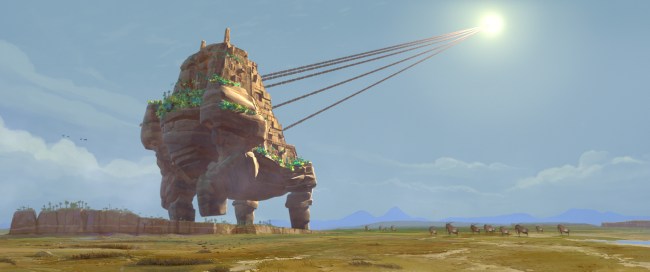
TMS: Mune seems to really embrace the cycle of life, and doesn’t shield away from characters passing away. Do you think there’s a lesson or message for children (or viewers in general) there?
Philippon: Well, the old Disney films often started with the death of the parents (Snow White, Bambi, even Tarzan). So we knew that children are open to the idea of passing away. In our film, we always tried to show it as a legacy of wisdom. We do have old guardians who “retire”, and they trust the powers they had in the hands of youngsters who have to show their value, and become responsible. It is one of the lessons of the film: be responsible for yourself and the world around you.
TMS: Do you have a favorite moment in the film?
Philippon: The dream scene,">From all the screenings we attended, it seems to be the favorite scene of everyone.
Heboyan: I love the sequence when Mune grabs the moon in the sky and hugs it. It’s a very iconic moment, that inspired an early poster.
TMS: There’s an interesting mixed-media approach in the film when the characters go to the world of dreams. How did that come about, and why do you think that technique was the best way to capture that transition?
Heboyan: Before directing Mune with Benoit, I was animator at Dreamworks, and worked on Kung-fu Panda. There was this really cool introduction animated by James Baxter, in a after-effect stylization that was pretty awesome. That inspired us to create the dream sequence in pencil animation. I studied in Gobelins like most of the designers and storyboarders working on Mune, and we began with 2d animation. It seemed obvious to use this technique, that worked as an other dimension for our characters: and seeing them in 2d is often what delight the most younger audience we’ve met during festivals.
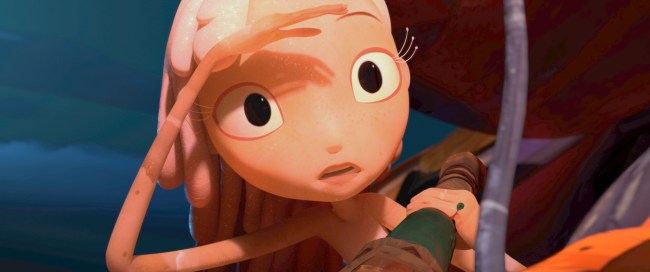
TMS: I thought that Gilm, the young girl made of wax, was such an interesting and original character. She’s incredibly brave despite being one of the most delicate members of the team. Can you talk a bit about how she came about and what you think she brings to the story?
Philippon: The girl, in movies, is often a small part, a weak character that the hero has to protect. We wanted to change that wrong image of what should be a female character. Yes, Glim is vulnerable, being made out of wax, but she overcame her handicap by learning a lot (so she’s much more intelligent than the two official guardians), keep being ultra positive and full of life. She wants to go for adventure, and won’t let anyone stop her. And she’s ready to sacrifice herself to save her planet.
Being a wax character, she lives between day and night, meaning she’s the perfect balance between Mune and Sohone, she’s both vulnerable and strong, sensitive and witty, fragile and adventurous. She’s not just the classical princess waiting for Prince Charming. She takes things in charge, like women do in real life.
TMS: Mune had such an incredible team in pretty much every aspect, with Nicolas Marlet, Hidetaka Yosumi, and Bruno Coulais just to name a few. What was the collaboration and development like with so many talented individuals?
Heboyan: Before leaving Dreamworks in 2008, I met with Nico in Dreamworks, telling him I would leave the company to direct Mune in France with Benoit. I pitched him the story, and I think he immediately fell in love for Mune and Cire. He said: “Alex, I’m gonna design those characters.”
Then, later on, we created this art-book filled with art from Nico, Aurélien Prédal and Rémi Salmon (Mune art directors) among other talents. Whenever we were meeting new artists (like Bruno for instance), we were showing this book, and you could see eyes of artists starting to shine. I think they were attracted by the creativity that irradiates from the project: from the visuals to the music, every task required exploration and invention. An artist like Hidetaka Yosumi, coming from Disney studio, was attracted by this challenge.
TMS: Mune paints an image of heroism that isn’t just violence or domination. What do you hope viewers take away from that?
Philippon: The world is not black and white. Everybody has flaws and strengths, and everyone has obstacles to overcome to learn about his path in life. It’s important for children to know that they have the right to make mistakes, and learn from these, that you don’t need to have super-powers to be a hero, in a more simple way, that anyone can have a great destiny, if one has a good heart. ">Forgiveness is a very important virtue, especially in our difficult times.
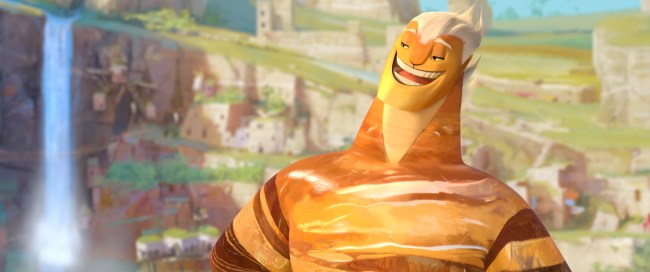
TMS: Is there anything else we should know about the film?
Heboyan: The project was in John Lasseter’s hands at some point. I got to meet Glen Keane in 2009, through his daughter who was a friend. We showed him the art book at that time: he felt in love with the project. He wanted to see projects like this in Disney. Glen asked for a copy of the book to show it to Disney to Ed Catmul and John Lasseter. A month later, he phoned me: Ed was excited about the movie. Needed to talk to John now. In Paris, we were excited. Mune produced in Disney! Finally, he met with John. For some reason, he dismissed the project, end of the story. Making an art book was definitively worth it!
From the producers of The Little Prince, the film will take you to a magical world where the sun is moved by a harpoon and the moon comes from the world of dreams. Every few minutes, I would find myself wondering, “How did they think of that?” Mune comes to theaters early this year!
Want more stories like this? Become a subscriber and support the site!
—The Mary Sue has a strict comment policy that forbids, but is not limited to, personal insults toward anyone, hate speech, and trolling.—
Follow The Mary Sue on Twitter, Facebook, Tumblr, Pinterest, & Google+.
Have a tip we should know? [email protected]